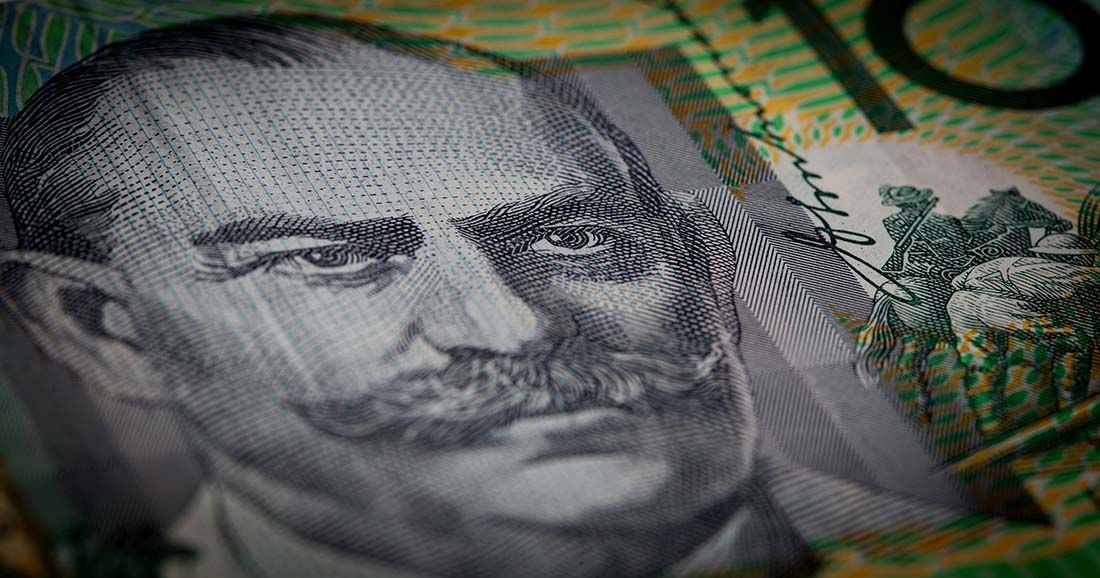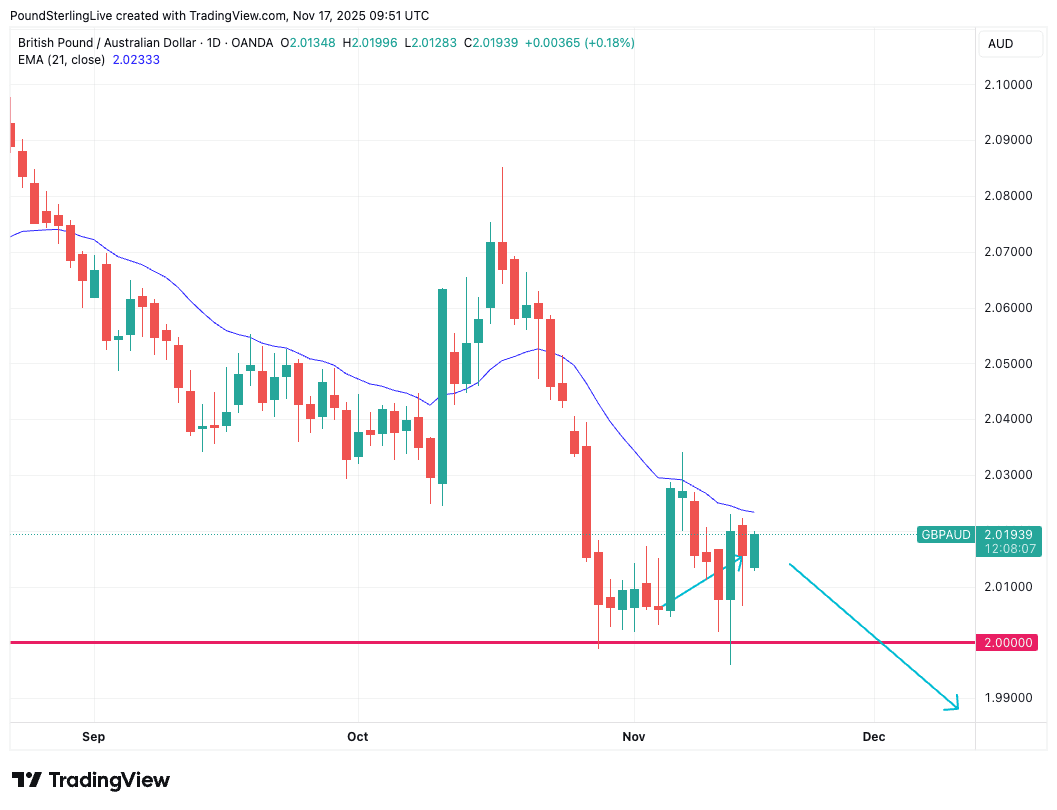
Image © Adobe Stock
The pound to Australian dollar exchange rate (GBP/AUD) is at 2.0230 and is liable to slip lower over the course of the coming week.
The pair starts the week with a descent bid that takes it up to the 21-day exponential moving average (EMA), but for now, gains still look to be part of a consolidative phase that should precede another leg lower.
The chart below was drawn two weeks ago and laid out how we saw price action evolving over the near-term; it's still relevant:
It's proven remarkably apt and we are sticking with the annotations - the teal arrows - that were issued two Mondays ago. In short, a period of recovery should be shallow and ultimately give way to further weakness and a break below 2.0.
? Note that the 21-day exponential moving average (EMA) at 2.0233 is capping proceedings and is pointed lower, guiding the GBP/AUD on its journey south.
This is consistent with a view that the Aussie dollar stands to be an outperformer in the G10 space into year-end as trade war fears fade and sentiment is bolstered by further U.S. interest rate cuts.
U.S. President Donald Trump on Friday cut a number of food-related import tariffs to ease domestic inflationary pressures, which signals a continued easing in trade tensions, while also signalling he is willing to take some pressure off domestic inflation.
The Australian dollar is highly sensitive to this U.S.-centric sentiment, meaning that it can rally if the market starts to rebuild bets for a December rate cut at the Federal Reserve. This can happen if traders see disinflationary trends building in the pipeline.
When looking for these trends, keep an eye on Thursday's U.S. jobs report data, which will shed some welcome light on the state of the labour market, a key driver of inflation dynamics.
? "Should we see a meaningfully soft jobs print this week, one that sees payrolls drop into negative territory, could prompt USD downside and increase rate-cut bets – potentially extending USD weakness," says Aaron Hill, Chief Analyst at FP Markets.
The Aussie dollar would be at the front of the advance against the USD, and this means GBP/AUD would come under pressure in the event of a soft jobs report.
Looking at the GBP/AUD's constituents, there are no market-moving events scheduled for Australia this week. However, we do have some intrigue in the UK where pre-budget jitters continue to weigh on the pound.
? "Sterling closed last week on a weaker footing, with a mix of political and macro factors weighing on the pound. Allegations of a potential leadership challenge for Starmer, soft labour market and GDP data, and U‑turns on tax hike plans (notably income tax) all contributed to the pressure," says Antonio Ruggiero, an analyst at Convera.
? The coming week sees the release of UK inflation data, which should offer some near-term volatility, although it likely won't shift sterling's fortunes in a meaningful manner given the proximity of next week's budget.
Inflation is expected to cool from recent highs, with the market anticipating a fall from 3.8% y/y in September to 3.6% in October, which is consistent with the Bank of England thinking it can lower interest rates further in the coming months.
A steady shift lower in the expected path of UK interest rates has weighed on the pound over recent weeks.
"What about a surprise upside in inflation?" asks Aaron Hill, Chief Analyst at FP Markets.
He explains:
"While a print that exceeded prior data will likely move the GBP higher it is likely to be short-lived, given the economic situation in the UK and the Autumn Statement is scheduled for 26 November. The Labour government has dropped plans to raise income taxes, causing Gilt yields to rise and the GBP to fall."
? The pound will likely stay under pressure on building anticipation ahead of next week's budget. The currency saw significant volatility last Friday when the government briefed the media on its latest plans.
It briefed that it would no longer need to cut taxes, and then counter-briefed on a couple of other occasions to steady the market, which baulked at fears the government would not do enough to raise taxes and plug a growing black hole in the finances.
Heightened anxieties about the budget should limit GBP/AUD upside.

